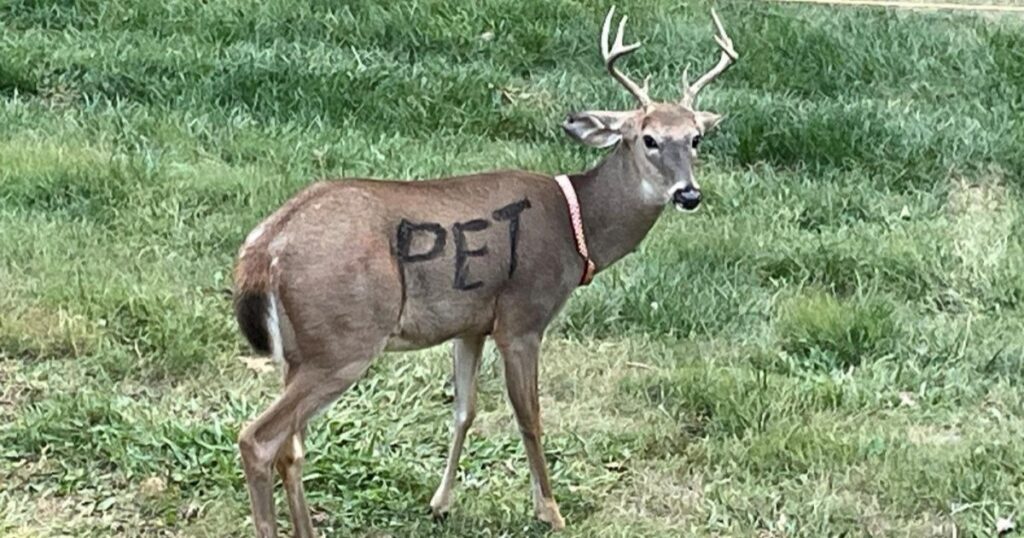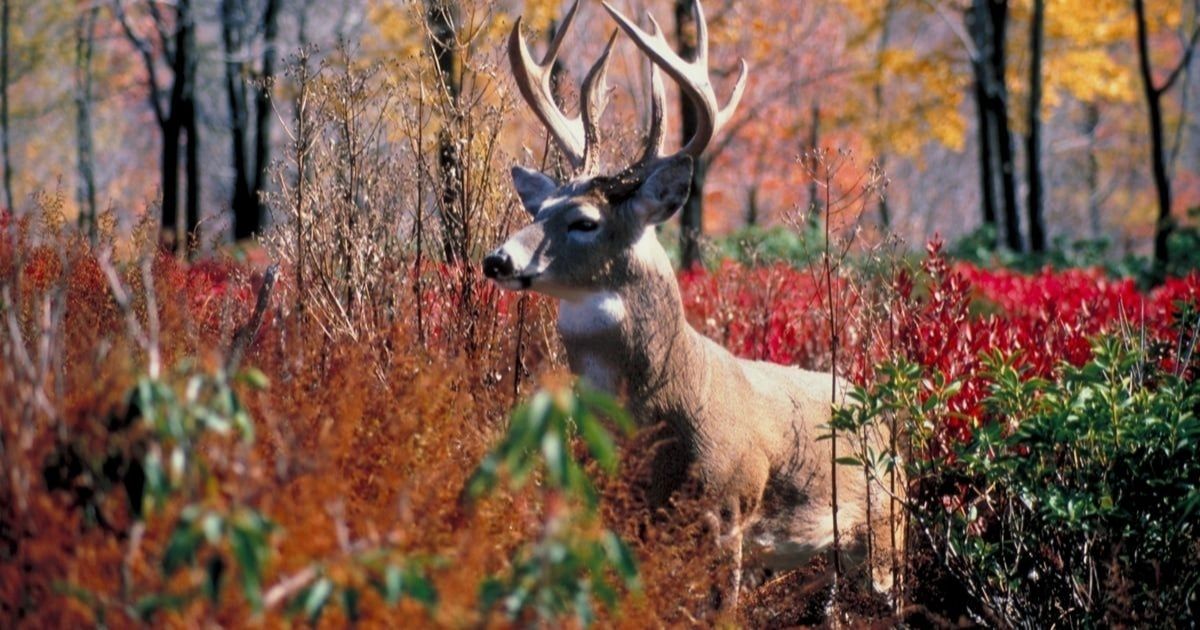Deer can be a significant nuisance for gardeners, often causing extensive damage to plants, fruits, and vegetables. Their voracious appetite and ability to jump over traditional fences make them particularly challenging to manage. This comprehensive guide will explore various methods to keep deer away from your garden, ensuring your hard work doesn’t become a midnight snack for these unwelcome visitors.
What is the thing that keeps deer away?
There isn’t a single foolproof solution that keeps deer away from gardens. Instead, a combination of strategies is often most effective. These can include physical barriers, scent-based repellents, visual deterrents, and strategic planting. Let’s explore some of the most popular and effective methods:
- Fencing: A tall fence (at least 8 feet high) is one of the most reliable ways to keep deer out. While expensive, it’s a long-term solution that can protect your entire garden.
- Repellent sprays: Both commercial and homemade deer repellents can be effective. These often use strong scents or tastes that deer find unpleasant.
- Motion-activated devices: Sprinklers or lights that turn on when deer approach can startle them and discourage repeated visits.
- Noisemakers: Radios or other devices that produce intermittent sounds can make deer uncomfortable and less likely to linger in your garden.
- Plant selection: Choosing plants that deer don’t find palatable can reduce the attractiveness of your garden to these animals.
How to Build a Deer-Proof Garden
Creating a deer-proof garden involves a multi-faceted approach. Here are some steps you can take:
Also read this post:Olive Garden Pay
- Install proper fencing: As mentioned earlier, a tall fence is crucial. Make sure it’s at least 8 feet high and doesn’t have large gaps that deer could squeeze through.
- Use repellent sprays: Apply commercial or homemade repellents regularly, especially after rain. Rotate different types to prevent deer from becoming accustomed to a particular scent.
- Implement scare tactics: Use motion-activated sprinklers, lights, or noise makers to startle deer and make them feel unsafe in your garden.
- Plant strategically: Surround vulnerable plants with deer-resistant varieties. Strong-smelling herbs like lavender, mint, and rosemary can act as natural deterrents.
- Remove attractants: Keep your garden clean of fallen fruit or other food sources that might attract deer.
How to Keep Animals Out of Your Vegetable Garden

While this article focuses on deer, many of these techniques can be effective against other garden pests as well. Here are some additional tips for protecting your vegetable garden:
- Use row covers: Lightweight fabric covers can protect plants from a variety of pests, including deer, rabbits, and insects.
- Create raised beds: Elevated garden beds can make it more difficult for some animals to access your plants.
- Use companion planting: Certain plants can repel specific pests. For example, marigolds are known to deter many insects.
- Maintain cleanliness: Regularly remove fallen fruits and vegetables, which can attract pests.
- Consider electric fencing: While more extreme, electric fences can be very effective at keeping out persistent animals.
How to Keep Ants Away From Hummingbird Feeders
While not directly related to deer, this is a common gardening concern. To keep ants away from hummingbird feeders:
- Use ant moats: These are small cups of water that hang above the feeder, creating a barrier ants can’t cross.
- Apply petroleum jelly: A thin layer on the hanger can prevent ants from reaching the feeder.
- Keep it clean: Regularly clean the feeder and wipe away any spilled nectar.
- Relocate the feeder: If ants persist, try moving the feeder to a new location.
How to Keep Deer Out of Your Garden Without a Fence
While fencing is highly effective, it’s not always feasible or desirable. Here are some fence-free methods to deter deer:
The Deer Menace
Before diving into solutions, it’s important to understand the challenge. Deer are persistent, adaptable, and can jump surprisingly high. They’re also creatures of habit, so once they find a good food source, they’re likely to return.
- Use strong-smelling repellents: Sprays containing predator urine, garlic, or hot pepper can be effective.
- Plant deer-resistant species: Choose plants that deer typically avoid, such as lavender, boxwood, and daffodils.
- Create visual barriers: Use stakes with reflective tape or old CDs to create movement and reflected light that can startle deer.
- Employ scare tactics: Motion-activated sprinklers or ultrasonic devices can frighten deer away.
- Use soap: Hang bars of strongly scented soap around your garden. The unfamiliar smell can deter deer.
Do these sprays frighten the deer or smell so bad that the deer don’t want to be there?

Deer repellent sprays work in various ways:
- Fear-based repellents: These often contain predator urine or other scents that make deer feel unsafe.
- Taste-based repellents: These make plants taste unpleasant to deer, often using hot pepper extracts or other spicy ingredients.
- Odor-based repellents: Strong smells like garlic or peppermint can overwhelm a deer’s sensitive nose, making the area unappealing.
Most commercial repellents use a combination of these approaches for maximum effectiveness.
What are the downsides to using repellents?
While repellents can be effective, they do have some drawbacks:
- Need for frequent reapplication: Most repellents wash off in the rain and need to be reapplied regularly.
- Potential harm to plants: Some repellents, especially homemade ones, can damage sensitive plants.
- Unpleasant odors: Many repellents have strong smells that humans may find offensive.
- Cost: Commercial repellents can be expensive, especially when used over large areas.
- Variable effectiveness: What works in one garden may not work in another, and effectiveness can change over time.
And, if you find a spray that works well, it may not always work well.
This is a crucial point. Deer can become habituated to certain repellents over time, reducing their effectiveness. To combat this:
- Rotate repellents: Use different types of repellents in rotation to prevent deer from becoming accustomed to any one scent or taste.
- Combine methods: Use repellents in conjunction with other deterrent methods for better results.
- Be persistent: Consistency in application is key, especially after rain or new growth.
- Adjust based on season: Deer’s dietary needs and preferences change throughout the year, so what works in spring may be less effective in fall.
And what about just planting stuff that deer don’t like to eat?
Planting deer-resistant species is an excellent long-term strategy. However, it’s important to note that “deer-resistant” doesn’t mean “deer-proof.” In times of scarcity, deer may eat plants they normally avoid. Some generally deer-resistant plants include:
- Herbs: Lavender, rosemary, mint, thyme
- Flowers: Daffodils, foxgloves, poppies, marigolds
- Shrubs: Boxwood, barberry, butterfly bush
- Trees: Birch, maple, dogwood
Remember to research plants that are both deer-resistant and suitable for your climate and soil conditions.
How Long Does a Deer Live?
Understanding deer biology can help in developing effective long-term strategies. In the wild, deer typically live 6-14 years, though captive deer can live up to 20 years. This longevity means that deer can learn and remember food sources over many seasons, underscoring the importance of consistent deterrent strategies.
How to Identify Deer Damage?
Recognizing deer damage is crucial for addressing the problem effectively. Here are some signs:
- Clean cuts: Deer lack upper incisors, so they tear plants, leaving a ragged edge, unlike the clean cuts made by rabbits or rodents.
- Height of damage: Deer can reach up to 6 feet high, so damage at this height is likely from deer.
- Tracks: Look for heart-shaped hoof prints around damaged plants.
- Droppings: Deer leaves behind distinctive pellet-like droppings.
- Rubbing on trees: Male deer may rub their antlers on young trees, stripping the bark.
How to Get Rid of Deer?

While “getting rid” of deer isn’t usually possible or desirable, here are some additional strategies to manage deer in your garden:
- Use deer netting: This fine mesh can be draped over valuable plants or used to create a temporary fence.
- Employ decoy predators: Statues of predators like coyotes can deter deer, but remember to move them regularly to maintain effectiveness.
- Create barriers with thorny plants: Deer dislikes pushing through thorny barriers. Plants like barberry or roses can create a natural fence.
- Use blood meal: This garden fertilizer has a scent that can repel deer. However, use it cautiously as it can attract other animals.
- Try hair sachets: Human hair in small mesh bags hung around the garden can deter deer with its unfamiliar scent.
- Consider professional help: If deer pressure is severe, consider consulting a professional wildlife management service.
In conclusion, keeping deer away from your garden requires a multi-faceted, persistent approach. By combining physical barriers, repellents, scare tactics, and smart planting choices, you can significantly reduce deer damage and enjoy the fruits (and vegetables) of your labor.
Remember, what works best may vary depending on your specific location and deer population, so be prepared to experiment and adjust your strategies as needed. With patience and persistence, you can create a beautiful, thriving garden in which both you and the local wildlife can coexist harmoniously.
FAQs
What smell do deer hate the most?
Deer have a strong aversion to pungent smells like garlic, rotten eggs, and predator urine. They also dislike strong-smelling herbs such as mint, lavender, and rosemary.
What home remedy keeps deer away?
A popular home remedy for repelling deer is a mixture of beaten eggs, water, and hot sauce, sprayed on plants. Another effective DIY solution is hanging bars of strongly scented soap around the garden perimeter.
How do I stop deer from eating my plants?
To stop deer from eating your plants, use a combination of physical barriers like fencing and repellent sprays. Additionally, planting deer-resistant species and using scare tactics like motion-activated sprinklers can help protect your garden.
Does anything repel deer?
Yes, several things can repel deer effectively. Commercial repellents, homemade sprays with strong odors, predator urine, and certain plants with strong scents or textures can all help deter deer from your garden.











